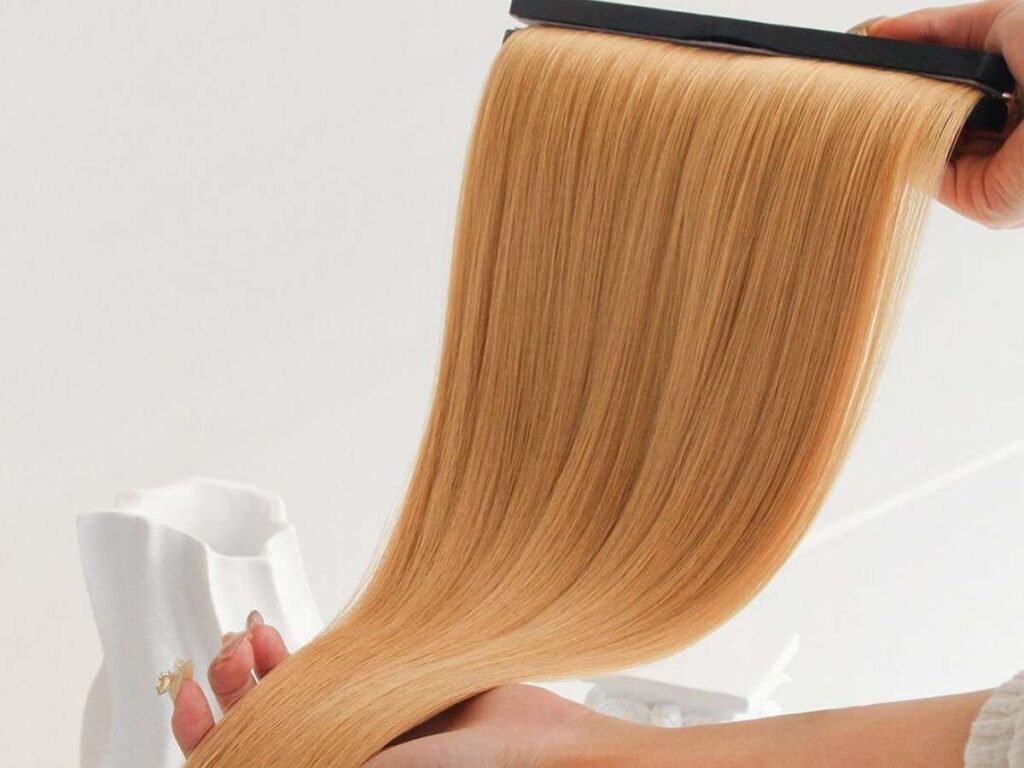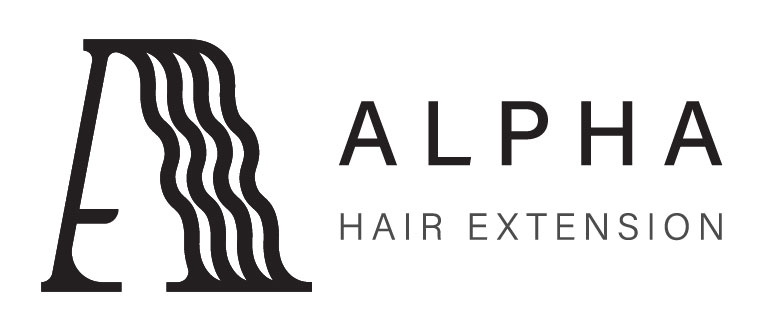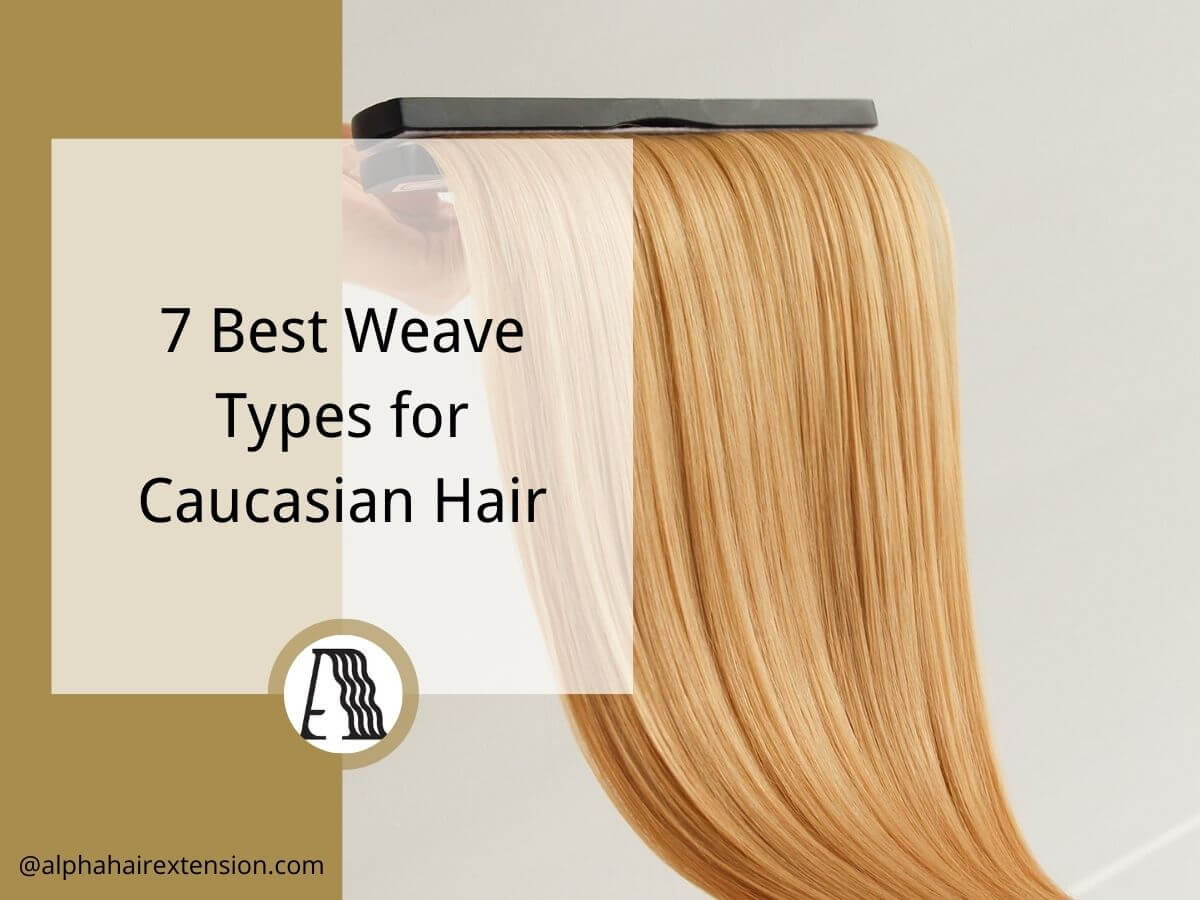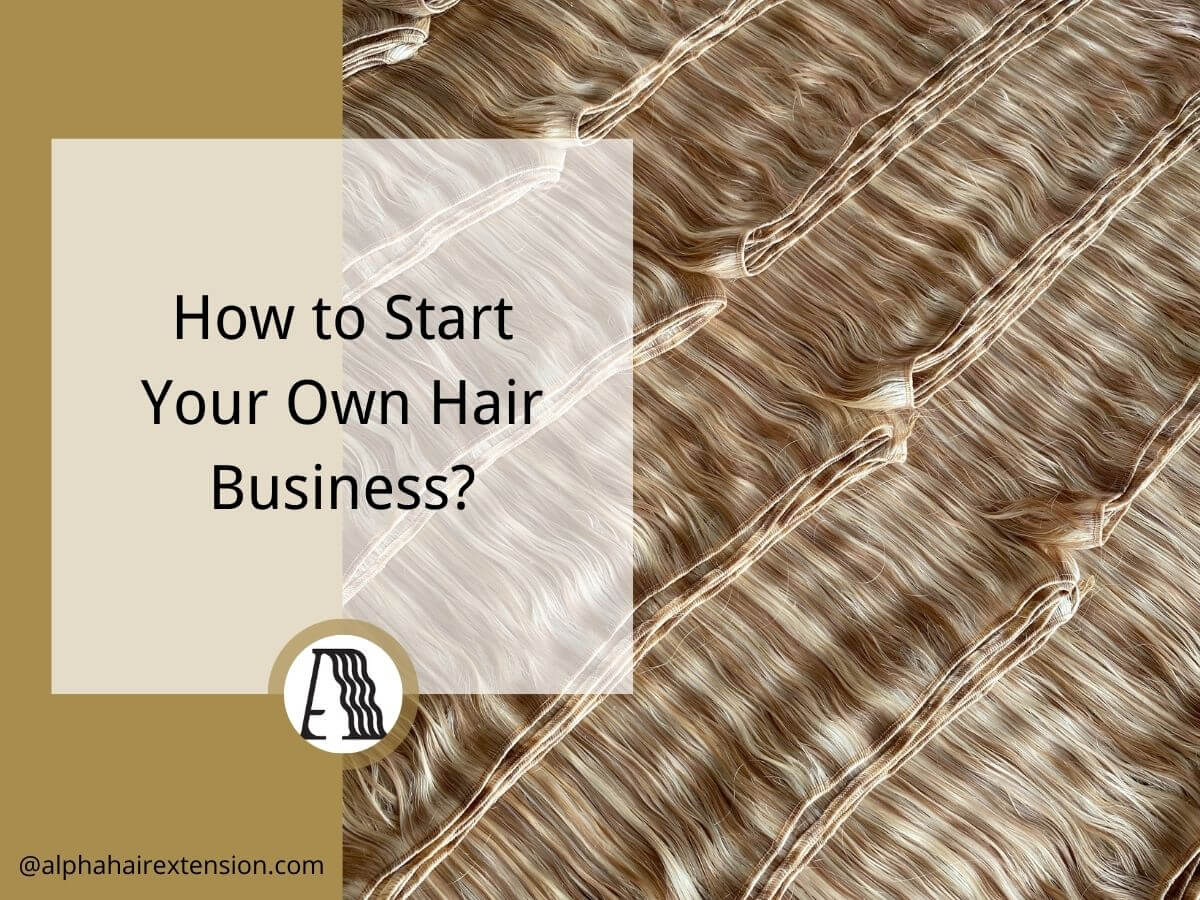A few years ago, I sat across from a beauty brand owner who looked frustrated. “My customers keep asking for hair extensions, but then someone else says they want a weave. Are they the same thing? What am I missing?”
I knew that struggle all too well. Back when I first entered the hair industry, I faced the same confusion. Different terms. Different methods. And there is no clear guide to separate them.
If you’ve ever felt unsure about these terms, you’re not alone.
Understanding the difference between these two methods is crucial for choosing the right product for your market. This article breaks it down simply. You’ll learn:
- The key differences in how they’re applied
- Which lasts longer
- Cost factors
- Who each method is best for
By the end, you’ll have a clear grasp of both hair extensions and weaves—so you can stock the right products, guide your customers, and grow your business with confidence.
So let’s dive in!
1. What Are Hair Extensions?
A client once walked into a salon, frustrated. She had tried every product to make her hair look fuller, but nothing worked. “I just want hair that looks thick and healthy,” she said. Like many others, she didn’t just want longer hair—she wanted confidence. That’s where hair extensions come in.
Hair extensions are extra strands or sections of hair that attach to natural hair. They create length, volume, and styling flexibility. Some extensions are temporary and easy to apply at home. Others require professional installation and last for weeks.
How Are Hair Extensions Applied?
There are several ways to install hair extensions. Some are quick and easy, while others require professional help. The right choice depends on how long the wearer wants them to last and how much effort they want to put into maintenance.
Here’s a breakdown:
- Clip-in extensions: Perfect for customers who want a temporary solution. These come with small clips attached to hair wefts and can be snapped in or out within minutes. Ideal for special occasions or a quick style change.
- Tape-in extensions: These have thin, adhesive strips that attach to natural hair. They last 6-8 weeks and require a professional to install and remove them. Great for customers who want something semi-permanent.
- Fusion (keratin bond) extensions: Individual hair strands are bonded to natural hair using heat and keratin glue. These last 3-4 months but require salon application and removal. Best for those looking for a long-term solution.
- Micro-link extensions: Also called micro-bead or micro-loop extensions. Tiny beads attach the extension strands to natural hair without glue or heat. They can last up to 3 months.
- Halo extensions: A single hairpiece attached to a thin wire. It sits on the head like a halo and blends in naturally. No clips, glue, or tape required. Perfect for those who want something effortless.
Each type serves a different purpose. Some are meant for quick styling, while others offer a long-term solution.
Synthetic vs. Human Hair Extensions
Hair extensions come in two main types:
- Synthetic hair: Made from plastic fibers. It’s affordable but doesn’t blend as well with natural hair. It also can’t handle heat styling.
- Human hair: Made from real human hair. It blends naturally, lasts longer, and can be washed, styled, and dyed just like natural hair.
For business owners, offering both options makes sense. Some customers prefer the quality of human hair, while others want a budget-friendly choice for short-term use.
Why Do People Use Hair Extensions?
Hair extensions aren’t just about adding length. They help with:
- Volume: Great for customers with thin or fine hair.
- Styling flexibility: Perfect for those who love to switch up their looks.
- Instant results: No waiting months for hair to grow out.
- Special occasions: Weddings, photoshoots, or big events.
If you’re in the beauty business, understanding these details helps you recommend the right products to your customers. Whether they need a temporary boost or a long-term solution, knowing their options makes all the difference.

2. What Is a Weave?
Have you ever wondered how some people switch from short hair to long, flowing styles overnight? A weave makes that possible. It’s more than just added hair—it’s a protective style that gives natural hair a break while allowing for endless styling options.
If your customers ask for a hair transformation that lasts, a weave might be what they need. But not all weaves are the same. Understanding how they work helps you offer the right products.
How Is a Weave Installed?
A weave is a hair enhancement method where extensions are attached to the natural hair in a more permanent way. Unlike clip-ins or tape-ins, a weave doesn’t come in and out easily. It stays in place for weeks or even months.
There are a few ways to install a weave:
- Sewn-in: The most common method. The natural hair is braided into tight cornrows, and the hair wefts are sewn onto the braids using a needle and thread.
- Bonded: Wefts are glued directly to the natural hair or onto a protective cap placed over the scalp. This method is quicker but doesn’t last as long as a sewn-in weave.
- Quick weave: A faster alternative where tracks are glued onto a cap instead of natural hair. This is a short-term option, lasting a few weeks.
Each method has different benefits. Sewn-in weaves last longer, while bonded and quick weaves offer faster styling with less commitment.
Why Do People Choose Weaves?
Weaves are more than just a way to add length. Many people use them for protective styling. This means keeping the natural hair tucked away to reduce breakage and allow it to grow.
Weaves also:
- Provide long-lasting volume and length
- Allow for color and style changes without damaging natural hair
- Reduce daily styling time
- Work well for thick, coarse, or curly hair
A weave can be a great option for those who want a break from styling their natural hair or who want a full, dramatic look.
Full Weaves vs. Partial Weaves
Not all weaves cover the entire head. Some people want a complete transformation, while others prefer a blend of their natural hair with extensions.
- Full weave – Covers the entire head. The natural hair is braided underneath, and none is left out. Best for those who want a totally new look or need full protection.
- Partial weave – Only some sections of the hair are braided and covered with extensions. Some of the natural hair is left out to blend in. This gives a more natural look but requires more maintenance.
For business owners, offering the right type of weave means understanding what your customers need. Are they looking for a protective style? Do they want something quick or long-lasting? Knowing the difference helps you recommend the best option.
3. Key Differences Between Hair Extensions and Weaves
Choosing between hair extensions and weaves depends on how long the style should last, how much maintenance is involved, and what the customer wants to achieve. Some prefer quick, temporary changes, while others need a long-term protective style.
The table below breaks down the key differences in installation, durability, cost, and best uses to help you choose the right option for your customers.
| Category | Hair Extensions | Weaves |
| Installation Process | Multiple application methods. Can be temporary or semi-permanent. | Attached by sewing or bonding to braided hair. Requires a professional. |
| Application Methods | – Clip-in: Quick, temporary, and reusable. – Tape-in: Semi-permanent, attached with adhesive strips. – Micro-links (I-Tip): Secured with small beads, no glue. – Fusion (Keratin Bonds): Heat or glue-applied, long-lasting. | – Sewn-in: Natural hair is braided, and wefts are sewn in. – Bonded: Wefts are glued onto hair or a protective cap. – Quick weave: Uses a cap for protection before gluing. |
| Durability & Longevity | – Clip-ins: Reusable daily. – Tape-ins & Micro-links: 4–8 weeks. – Fusion Extensions: 3–6 months with proper care. | – Lasts 4–8 weeks before needing removal or maintenance. – More durable than temporary extensions. |
| Purpose | Adds length, volume, and styling flexibility. Good for short-term and long-term wear. | Used for protective styling and long-term wear. Gives full hair coverage. |
| Maintenance | Requires gentle handling and regular care based on the type. Some need professional upkeep. | Requires professional maintenance. Natural hair underneath needs care. |
| Cost & Profitability | – Prices vary based on material, length, and method. – Synthetic hair: More affordable, short-term use. – Human hair: Higher cost, longer-lasting. – More accessible for budget-conscious customers. | – More expensive due to installation costs and long wear time. – Higher profitability for salons offering premium services. |
| Best For | Customers who want flexible, lower-maintenance options. Good for those who like switching styles often. | Customers looking for a long-term, protective style. Best for those who prefer a full-coverage look. |
4. 6 Tips for Choosing the Right Product for Your Business
Stocking the right hair products means understanding your customers’ needs. Some want quick, temporary solutions. Others prefer long-term styles. The right choice depends on their budget, lifestyle, and styling preferences. Use this guide to help you decide what works best for your business.
#1 Who Are Your Customers?
Think about the people buying from you. Do they love switching up their style every few days? If so, hair extensions are likely the right fit. Customers who want clip-ins or tape-ins usually prefer something they can install and remove easily. They like versatility and often change their look for events, work, or social outings.
But if your customers want something longer-lasting with less daily effort, they may prefer weaves. These clients typically want full hair coverage and don’t want to style their hair every day. Many also look for protective styling to help their natural hair grow.
#2 Price Matters
I once advised a distributor who only carried premium hair extensions. Her products were high-quality, but sales were slow. Why? Her market was full of budget-conscious buyers who wanted affordable options.
If your customers watch their spending, synthetic hair extensions or clip-ins may be the way to go. They cost less upfront and are easy to replace.
On the other hand, weaves cost more because they require professional installation. But they also last longer, making them a great choice for customers willing to invest in long-term styles. If you sell to salons or high-end beauty retailers, weaves can be a profitable option.
#3 How Much Maintenance Are They Willing to Do?
Extensions and weaves require different levels of care. Some customers want low-maintenance styles, while others are happy to spend time on upkeep.
- Hair extensions (like clip-ins or tape-ins) require regular washing, brushing, and careful storage. Some, like fusion or micro-links, need professional maintenance every few weeks.
- Weaves last longer, but they require proper scalp care and salon visits to keep them looking fresh. Customers who don’t want to visit a stylist regularly might find weaves too much work.
Knowing how much effort your customers are willing to put into maintenance will help you stock the right products.
#4 How Often Will They Change Their Style?
One of my clients, an online retailer, noticed that some of her customers kept buying clip-ins every few months. They loved having the freedom to switch styles whenever they wanted. If your customers are the same, offer hair extensions in different textures, colors, and lengths to keep them coming back.
For customers who prefer consistency, weaves may be a better fit. They last for weeks, making them perfect for those who want a set-and-forget style.
#5 Storage and Stocking
Hair extensions are easy to store and ship. They’re lightweight and don’t take up much space, making them perfect for e-commerce stores or small beauty retailers. You can stock a variety of styles without worrying about space.
Weaves, on the other hand, require bulk storage. Since they sell best through salons and professional stylists, carrying them makes sense if you serve those customers. If you have limited space, you may need to focus on a few key styles rather than offering a large variety.
#6 Profit Potential
I’ve seen businesses thrive selling hair extensions because customers come back for different styles, colors, and lengths. Extensions can bring in repeat buyers, especially if you offer high-quality human hair options.
On the other hand, weaves offer bigger sales per purchase. Since they require professional installation, salons can charge more and keep customers coming back for maintenance. If you cater to a salon-based audience, weaves might bring in higher profits over time.
Whatever you decide, knowing your customers is the key to making the right business moves. When you offer the right products, you’re not just selling hair—you’re helping customers feel confident and satisfied with their choices.
Conclusion
I’ve seen businesses struggle because they didn’t understand the difference. But I’ve also seen them thrive once they got it right.
Hair extensions and weaves serve different needs. The key is knowing your audience and choosing what works best for them.
Your next step? Make a decision that grows your business.
What will you offer—versatile, easy-to-sell extensions or long-lasting, salon-driven weaves?
Contact us today to find the best hair solutions for your business.
Discover More Options
Want to see more products? We’ve got plenty of options that might just be the perfect fit for you:
Still haven’t found what you’re looking for? Don’t hesitate to contact us. We’re available around the clock to assist you.







